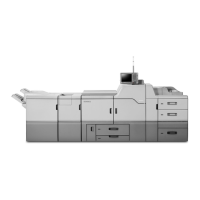8. Press [Change] for "Login Name Attribute".
If this item is not visible, press [ Next] to display more settings.
9. Enter the login name attribute, and then press [OK].
Use the login name attribute as a search criterion to obtain information about an authenticated user.
You can create a search filter based on the Login Name Attribute, select a user, and then retrieve the
user information from the LDAP server so it is transferred to the machine's Address Book.
To specify multiple login attributes, place a comma (,) between them. The search will return hits for
either or both attributes.
Also, if you place an equal sign (=) between a login attribute and a value (for example: cn=abcde,
uid=xyz), the search will return only hits that match the values specified for the attributes. This search
function can also be applied when Cleartext authentication is specified.
When authenticating using the DN format, login attributes do not need to be registered.
The method for selecting the user name depends on the server environment. Check the server
environment and enter the user name accordingly.
10. Press [Change] for "Unique Attribute".
11. Enter the unique attribute and then press [OK].
Specify Unique Attribute on the machine to match the user information in the LDAP server with that in
the machine. By doing this, if the Unique Attribute of a user registered in the LDAP server matches that
of a user registered in the machine, the two instances are treated as referring to the same user. You
can enter an attribute such as "serialNumber" or "uid". Additionally, you can enter "cn" or
LDAP Authentication
57

